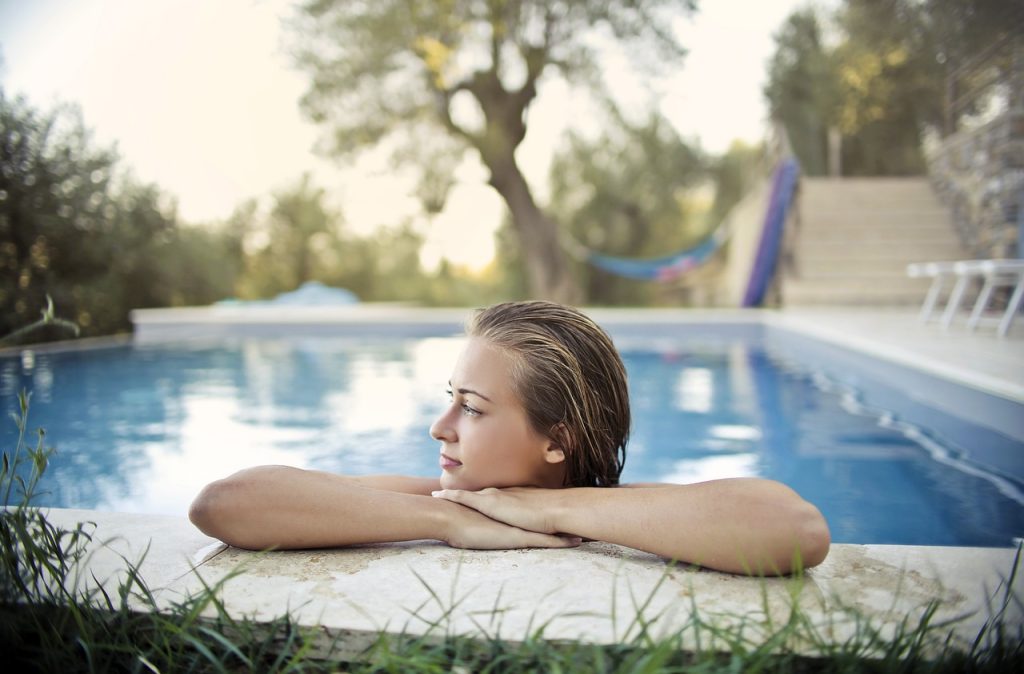You can have a safe and clean pool without using chlorine!
Others are reading now
Many pool owners believe that adding more chlorine ensures cleaner water.
However, experts warn that excessive chlorine can irritate skin and eyes, damage filtration systems, and lead to the buildup of compounds that reduce treatment effectiveness, according to Digi24.
Răzvan Olaru, a water treatment engineer at HydroSpa, highlights that traditional chlorine solutions, while seemingly inexpensive, come with hidden costs.
Calculations show that maintaining a chlorine pool can exceed 2,500 lei per season, factoring in auxiliary substances, weekly testing, and potential complete pool drainage.
Also read
In Europe and Romania, safer and more efficient systems like saline hydrolysis and UV lamp treatments are gaining popularity.
These methods eliminate manual dosing and significantly reduce chemical consumption.
According to HydroSpa, investing in such systems pays off in 1–2 seasons, with the added benefit of eliminating chlorine odor.
Classic chlorine treatment appears cost-effective initially.
But when considering the seasonal cost of chlorine, pH correctors, flocculants, anti-algae agents, weekly testing, corrective interventions, and potential pool drainage due to cyanuric acid accumulation, expenses can easily surpass $500 per season.
“Excess chlorine makes water unstable, damages filters, overworks maintenance systems, and increases costs,” explains Olaru, who has over 15 years of experience in water treatment.
Efficient technologies, including variable speed pumps, automatic chlorination systems, and remote monitoring sensors reduce or eliminate the need for aggressive chemicals and are affordable.
For instance, an electrolysis system starts at $900, quickly offsetting recurring chlorine costs and eliminating the hassle of manual testing or rebalancing after rain.
Saline hydrolysis is an automatic treatment that leaves water soft, odorless, and free of irritants.
It converts table salt into active chlorine through electrolysis, effectively destroying bacteria and algae.
Unlike traditional methods, chlorine is not added manually but is regenerated and transformed back into salt after use.
This eco-friendly solution reduces operational costs and risks associated with hazardous chemicals.
UV lamp treatment is another popular option. UV-C radiation emitted by these lamps destroys the DNA of microorganisms, neutralizing bacteria, viruses, and algae without adding substances to the water.
This environmentally friendly method is ideal for residential pools or spas.
UV treatment complements other methods, helping to oxidize organic matter and reduce combined chlorine, which causes unpleasant odors.
Maintenance is minimal, requiring only periodic cleaning and annual UV tube replacement.
Variable speed pumps allow constant water recirculation with reduced energy consumption.
They enable longer filtration times, ensuring better water quality. When paired with smart sensors that monitor chlorine, pH, temperature, and salinity, these systems can automate treatment processes and adjust filtration speeds based on the chosen program.
Integration is possible even in existing pools without major interventions.
To transition to a chlorine-free system, it’s essential to have a properly sized filter. Mechanical filtration plays a crucial role, regardless of the disinfection method.
A correctly sized system ensures the entire pool volume is filtered at least four times daily at the lowest possible speed.
For example, a 50 cubic meter pool should filter at least 200 cubic meters of water daily.
Daily maintenance tools like skimmers, brushes, and pH/salinity test kits remain essential.
For a modern approach, remote monitoring sensors provide real-time water quality data directly to your phone.
“Beyond comfort, a swimming pool means responsibility. The water must not only look clean but also be safe for users’ health,” emphasizes Olaru.
With a well-designed system, maintenance becomes routine, allowing you to enjoy clean water that’s gentle on your skin and environmentally friendly.


